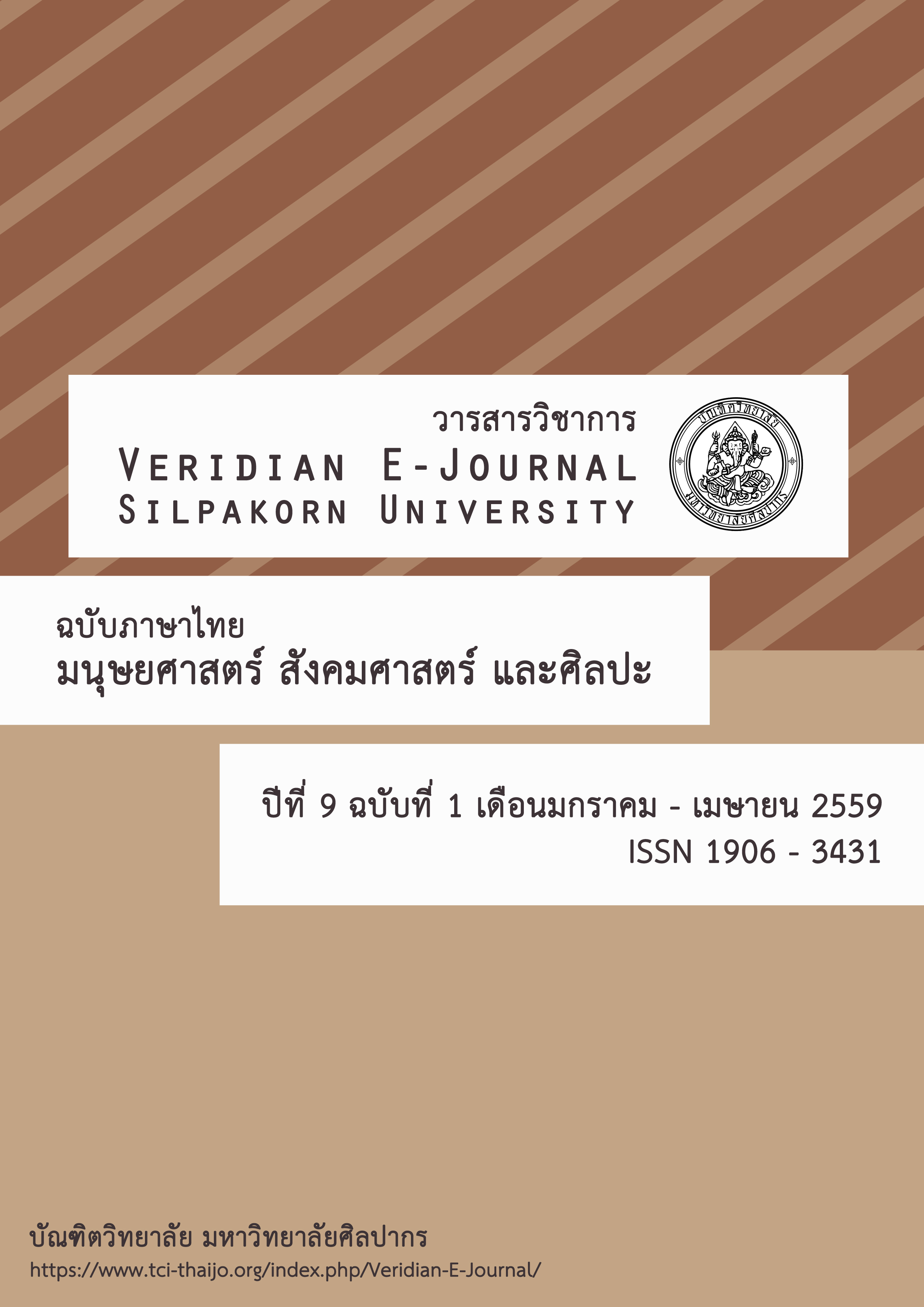แนวทางการปรับปรุงอาคารสำนักงานสาธารณสุขจังหวัดเพื่อประหยัดพลังงาน
Main Article Content
Abstract
บทคัดย่อ
การวิจัยครั้งนี้มีวัตถุประสงค์เพื่อหาแนวทางการปรับปรุงประสิทธิภาพของกรอบอาคารสำนักงานสาธารณสุขจังหวัดเชียงราย เพื่อลดการใช้พลังงานไฟฟ้าและให้กรอบอาคารมีค่าการถ่ายเทความร้อนรวมตามเกณฑ์ที่กำหนด จากเดิมที่วัสดุกรอบอาคารมีค่าการต้านทานความร้อนต่ำ คือมีค่า OTTV เท่ากับ 68.69 W/m2 สูงกว่าเกณฑ์ที่กำหนดให้ไม่เกิน 50 W/m2 และมีค่า RTTV เท่ากับ 27.64 W/m2 สูงกว่าเกณฑ์ที่กำหนดให้ ไม่เกิน 15 W/m2 มีเครื่องมือที่ใช้ในการวิจัย คือ โปรแกรม Building Energy Code software version 1.0.6 (BEC v.1.0.6) สำหรับจำลองการใช้พลังงานไฟฟ้าของอาคาร เกณฑ์ในการเลือกแนวทางปรับปรุงคือ 1) สามารถลดความร้อนที่เข้าสู่กรอบอาคาร 2) ไม่ส่งผลต่อความแข็งแรงของโครงสร้าง และ 3) ไม่เปลี่ยนแปลงรูปลักษณ์ภายนอกของอาคาร แนวทางปรับปรุงที่เลือก ได้แก่ การติดตั้งฉนวนหรือการเว้นช่องอากาศและปิดทับด้วยแผ่นผนังสำเร็จรูปที่ผนังทึบ การเปลี่ยนชนิดกระจกหน้าต่าง การติดฟิล์มที่กระจกใสเดิม การติดตั้งฉนวนเหนือฝ้าเพดาน และการทาสีสะท้อนความร้อนที่หลังคาดาดฟ้า ประเมินความเหมาะสมของแนวทาง โดยพิจารณาจากปริมาณไฟฟ้าต่อปีที่ลดลง (kWh/Year) และใช้วิธีการประเมินความคุ้มค่าของการลงทุนด้วยการคำนวณแบบระยะเวลาคืนทุน (Payback period)
ผลวิจัยพบว่า
1. แนวทางปรับปรุงผนังอาคารให้ผ่านค่า OTTV ใช้เงินลงทุนน้อยและคืนทุนเร็วที่สุด คือการปรับปรุงเฉพาะผนังทึบ โดยติดตั้งฉนวนโพลีสไตรีนแบบขยายตัว (EPS) หนา 35 มม. ชนิดแผ่นสำเร็จรูปพร้อมแผ่นยิปซั่มหนา 9 มม. มีค่า OTTV เท่ากับ 48.05 W/m2 สามารถลดปริมาณการใช้ไฟฟ้าลงได้ร้อยละ 8.16 ระยะคืนทุน 5.43 ปี ในกรณีที่ปรับปรุงทั้งผนังทึบและผนังโปร่งแสง ทำได้โดยเว้นช่องอากาศ กว้าง 9 ซม. ปิดทับด้วยแผ่นยิปซั่มบุฟอยล์ หนา 12 มม. ที่ผนังทึบ และเปลี่ยนกระจกโฟลตใส 6 มม. เป็นกระจกโฟลตสีเขียวเข้ม 6 มม. (SHGC 0.55) มีค่า OTTV เท่ากับ 41.11 W/m2 สามารถลดปริมาณการใช้ไฟฟ้าลงได้ร้อยละ 10.87 ระยะคืนทุน4.93 ปี
2. การปรับปรุงหลังคาอาคารเพื่อให้ผ่านค่า RTTV ใช้เงินลงทุนน้อยและคืนทุนเร็วที่สุด คือการปูฉนวนใยแก้วแบบม้วน หนา 75 มม. หุ้มด้วยอลูมิเนียมฟอยล์ เหนือฝ้าเพดานชั้น 3 มีค่า RTTV เท่ากับ 5.18 W/m2 ลดปริมาณไฟฟ้าลงได้ร้อยละ 6.26 ระยะคืนทุน 1.19 ปี
คำสำคัญ: ปรับปรุงอาคาร / สำนักงานสาธารณสุขจังหวัด / กรอบอาคาร / ประหยัดพลังงานไฟฟ้า
Abstract
This research aimed to find out ways to improve the efficiency of the building envelope of the provincial health office for reducing building energy consumption, and has standardized the heat transfer of building envelope value. The building has an OTTV of 68.69 W/m2 higher than the OTTV code which was set at not more than 50 W/m2 , and has a RTTV of 27.64 W/m2 higher than the RTTV code which was set at not more than 15 W/m2, due to the low thermal resistance of building envelope materials. Whole building energy consumption was simulated by Building Energy Code software version 1.0.6 (BEC v.1.0.6). The improvement strategy was chosen according to three criteria: 1) can reduce the amount of heat transfer through the building envelope, 2) does not affect the strength of the structure, and 3) does not change the façade of the building, The selection strategies were the installation of wall insulation or having an air gap, covered with a precast lightweight partition board, replacement of a new type of window glass pane, application of a window insulation film to a glass window, installation of ceiling insulation, and a roof coated with reflective coating. The effectiveness of strategies was assessed by considering the reduced unit of building energy consumption per year (kWh/year). The value of investments was assessed by the payback period of calculation method.
The results showed that
1. a strategy to improve the building of walls to comply with the OTTV code which has the lowest cost and shortest payback period and improve the opaque wall component is the installation of 35-mm thick instant EPS insulation with 9-mm regular gypsum boards, this would have an OTTV equal to 48.05 W/m2, which can reduce energy consumption by 8.16 percent, and give a 5.43-year period for return on investment. Improving both the opaque wall and fenestration components requires the installation of a 12-mm thick foil back gypsum board with a 9-cm wide air gap at the opaque walls, and replacing window glass panes with 6-mm dark green float glass panes (SHGC 0.55); this would have the OTTV equal to 41.11 W/m2, which can reduce energy consumption by 10.87 percent and give a 4.93-year period for return on investment.

